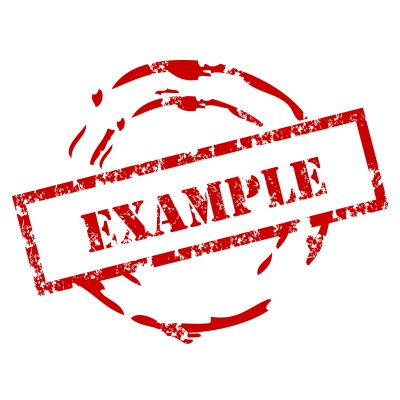By the end of the week, Radha has to complete a project, but she has another more important project that she needs to finish for another customer, and there is no way that she can complete both projects on time.
How does she tell her client that his plan isn’t as urgent as the other one she’s committed? And how can she do this without damaging their relationship?
Like Radha, many of us have situations where several people or teams are clamoring for our urgent attention. In this article, we’ll look at a common-sense approach for managing conflicting priorities and for keeping everyone satisfied.
WHAT’S IN IT
When Priorities Clash

As you already know what happens when you have conflicting priorities.
First of all, there can be a quality difference in your work as you work more quickly or multitask, and because of this, you find yourself delivering work to your customer later than you promised.
Although it can be more effective in the short term, it can lead to increased stress and lower performance. This will affect your reputation; the people who are dependent on you can be disappointed. Down the line, you can miss further opportunities, such as new exciting projects from your boss.
How to Manage Conflicting Demands.
So, how can you manage conflicting demands more effectively, and keep everyone happy? The first step is to clarify urgent priorities and to manage your schedule effectively.
This will help you to know which work you have to do and when you have to do it so that you can be protected from deadlines credibly and manage people’s expectations when they come to you with new projects.
When you can’t adjust work in schedule, or you can’t squeeze a task in your plan. An obvious thing you must do is delay those projects that are not urgent or particularly not essential. It can be delayed so that the critical project can be completed before the deadline.
Sometimes, however, it may not be clear what your highest priority tasks and projects are. If this is the case, and several tools can help you prioritize effectively – see our article on prioritization for more on these.
One of the most useful prioritization tools is Eisenhower’s Urgent/Important Principle. This may help you to decide which work is more important to be done right now or which can be done later.
Once you assess your priorities, you can show it to your boss and the client so that they can check whether it is perfect or not. Does your assessment of priorities match with their need?
Afterwards, put your project or task on your to-do-list and add them to your schedule. You will get to know which job is to do first and which responsibility you have to negotiate a new deadline for and where you’ll need help to get things done on time.
Prioritize new tasks and projects and add these to your schedule, as and when they come in. Also, review your priorities regularly.
Tip 1
You can learn more about prioritization in our Bite-Sized Training session, How to Prioritize.
Tip 2
Take our How Good is Your Time Management? Quiz to find out if you can improve your productivity.
After clarifying your priorities, look at your responsibilities and identify that any deadline you need to renegotiate.
This might seem as simple as saying, “I’m working on a project for Jack that he needs by noon. Can I get this to you by five?” Other times, you may need to negotiate the deadline of a project and push it back by weeks to arrange delivery of a project in smaller chunks.
To negotiate effectively, use Win-Win Negotiation to ensure that everyone comes away from the negotiation feeling that they’ve reached a fair compromise.
At this stage, you may find it better to explain why you have chosen your priorities the way you have. You may want to show them the consequences of not rearranging deadlines. Before taking any other new task, it’s essential to manage people’s expectations.
For example

If you’re having a meeting with your boss about a possible new project, communicate your current priorities with her, and agree on a completion date based on your Current workload. Or, if you’ve just started working with a new client, let him know if there’s Likely to be a time lag before you can take on new tasks.
The managing expectation for any job or project that you are working on is also essential. For instance, if you cannot complete a project or task for the manager in another department before the deadline let her know that you may have to deliver it later and then plan. You don’t want to make this a habit. You should learn how to estimate time accurately so that you set a realistic deadline and ensure that you have done everything to get the project on course sensibly (including working late) before you talk.
You probably already know what happened when we have conflicting priorities. Our quality of work and Safar and we find ourselves delivering well later than you decided. You might work for a long time to complete everything, and it can increase your stress, and your performance becomes slower. And the people depend on you to get disappointed in your reputation to go down in front of them, and it can also affect your relationship and make difficulties for further opportunities.
Ways to manage conflicting demands
1). Schedule Work effectively
you should clarify your priorities and manage your schedule by keeping in mind your preferences and manage programs effectively. This may help you to know what you can do and when and how capable you are.
2). Negotiate Deadlines
When you’re not able to perform tasks according to your schedule, you should do the urgent first and leave others for the delay.
3). Manage Exceptions
Managing people’s exceptions before you take on a new task is very important. Handling exceptions on any task or project that you are working on is also essential.
4). Be Professional

It is also essential to be professional. Your professionalism, especially during intense pressure time, is what demonstrates your character, who you are. It is also necessary to learn how to manage your emotions effectively when you are overloaded.
5). Be flexible
The meaning is to be flexible; there may also be the time when you don’t negotiate deadlines or delegate tasks to other people in your team.
You should be prepared to do some extra work if appropriate and also keep people satisfied. And all this should also not happen too often.
All of us have conflicts, where many things or people are clamoring for our attention. We need to know that managing this demand is useful so that all of us remain happy.
We all should start by clarifying our priorities and scheduling work effectively. We should use appropriate negotiating strategies to rearrange deadlines. We should also learn.
At the time of reprioritizing tasks and projects, many people would not like your decision. In this situation, you should try to negotiate and make a decision that will work for both of you. But after this also if they say that their task is more critical in comparison to your job, then you should defend your priorities, that too without damaging your relationship.
For Example
Imagine you told your colleagues that you can’t finish a report until Tomorrow. As you have also been given a task to complete and which may take the full day. But then she is not ready to understand as she thinks that her report would only take 30 minutes. And now she feels that you are unreasonable.
Now you should talk to her and try to understand that you are now why she feels upset. Now, you have to decide and explain your needs which are more important. For instance, you must complete the task given by the boss till 5:30. You have to keep the promise that you have made to your boss. Therefore you have to devote yourself to the task. And now, after explaining your needs, reach a compromise like you; you will need your colleagues in any other task in the week. Or tomorrow, you will first concentrate on your colleague’s report.
At last, I would like to conclude in such a way that we all should keep people satisfied. We should know how properly we can manage our conflicting demands. A person needs to know how to manage conflicting demands. If a person doesn’t know how to manage conflicting demands, he/she might get various difficulties. For managing conflicting demands, we should do schedule work effectively, negotiate
Conclusion
Deadlines, manage expectations, be professional, be flexible if the above points are not taken into consideration there may be many problems in managing conflicting demands and if conflicting demands are not achieved it will lead to many issues in the daily routine of a human being or a person, so it is essential to manage conflicting demands.
Also you can read our blog on Email Management – Managing Email Effectively -Strategies for Taming Your Inbox
FAQ’s
4 Scientifically Proven Ways To Stay Happy All The Time:-
Exercise more.
Positive thinking affects your performance.
Practice mindfulness.
Dedicate a little time to helping others.
Satisfied people spend less time judging why things don’t work out and spend more time
being grateful for the rare times when they do. Self-aware, they recognize their own limitations,
which helps them also accept that everyone else is less than perfect, too.
Here are 5 simple ways you can enjoy your life more, starting today:
Focus on Yourself.
Avoid the News.
Keep a Wish List.
Make Time to Relax.
Try New Things.
The fundamental reason why happiness is so important is that it’s extremely vital to our
own goals in life and can help us achieve many other cherished personal ambitions and goals.
Also, by being happy, we have the potential to change many other lives just by being ourselves.
A survey from the Chopra Center also included five components of job satisfaction:
engagement; respect, praise and recognition; fair compensation; motivation and life satisfaction.



